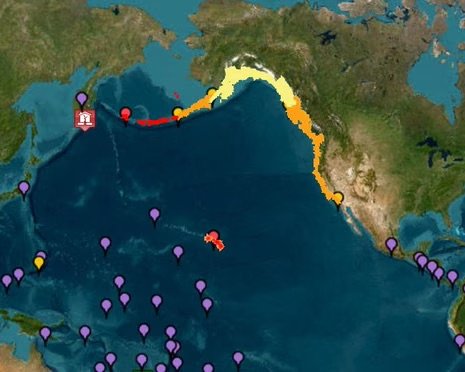A massive 8.8 magnitude earthquake struck off Russia’s Kamchatka Peninsula on July 29, 2025, at 1:25 p.m. HST, triggering widespread tsunami warnings across the entire Pacific Rim and forcing thousands of coastal residents to evacuate to higher ground. This seismic event represents one of the most significant natural disasters of 2025, with implications extending far beyond immediate safety concerns.
Unprecedented Scale of Response Across Pacific
The earthquake off Russia’s Kamchatka Peninsula resulted in tsunami warnings from the U.S. Tsunami Warning System for multiple coastal regions, including Hawaii, where the first waves are expected to reach around 7:10 p.m. Hawaiian Time. Hawaii Governor Josh Green urged all people to evacuate coastal zones and expect imminent flooding on all islands, while Alaska’s Aleutian chain received tsunami warnings with advisories for other parts of the state.
The geographic scope is staggering. British Columbia issued tsunami advisories for most of its coast, while the Mendocino Coast received warnings with tsunami waves expected to reach the coastline around midnight. This coordinated response demonstrates the interconnected nature of Pacific Ocean tsunami risks and the sophistication of modern warning systems.
4.7 magnitude #earthquake. 58 km from Tarata, Tacna, #Peru https://t.co/0F3bm1dgQz
— Earthquake Alerts (@QuakesToday) July 30, 2025
Why This Event Matters Beyond Immediate Danger
The 8.8 magnitude rating places this earthquake among the most powerful recorded in recent decades, comparable to the 2011 Tōhoku earthquake that devastated Japan. However, the current event’s significance extends beyond its magnitude to what it reveals about our evolving understanding of seismic risk and emergency preparedness.
First, this earthquake demonstrates the vulnerability of the entire Pacific Rim to cascading natural disasters. The “Ring of Fire” geological activity pattern means that major seismic events in one region can trigger warnings across thousands of miles of coastline, affecting millions of people simultaneously.
Second, the rapid response showcases how dramatically tsunami warning systems have improved since the devastating 2004 Indian Ocean tsunami. The Pacific Tsunami Warning Center’s ability to assess risk and issue coordinated warnings across multiple countries within hours represents a major advancement in disaster preparedness technology.

Economic and Infrastructure Implications
Beyond immediate safety concerns, this event highlights critical economic vulnerabilities. Coastal evacuation orders disrupt major ports, airports, and transportation networks across the Pacific. Hawaii’s tourism industry, already sensitive to natural disaster concerns, faces potential long-term impacts even if physical damage proves minimal.
The evacuation response also reveals infrastructure limitations. Traffic backup in Hawaii during evacuation demonstrates that many coastal communities remain inadequately prepared for rapid population movement, a critical issue as climate change increases extreme weather frequency.
Climate Change Context and Future Risks
While earthquakes aren’t directly caused by climate change, rising sea levels amplify tsunami risks by reducing coastal buffer zones. This event occurs amid growing scientific concern about the interaction between geological hazards and changing ocean conditions.
The current earthquake also serves as a stress test for Pacific Rim preparedness systems. As coastal populations continue growing and infrastructure becomes more complex, the potential for cascading failures during natural disasters increases exponentially.
Lessons for Global Disaster Preparedness
This earthquake reveals both strengths and weaknesses in international disaster response coordination. The rapid information sharing between national warning centers demonstrates effective international cooperation, while evacuation challenges highlight the need for improved local infrastructure.
For coastal communities worldwide, this event underscores the importance of maintaining updated evacuation plans, improving early warning system accessibility, and investing in resilient infrastructure design. The Pacific-wide scope demonstrates that tsunami preparedness cannot be treated as a local issue but requires coordinated regional planning.
As climate-related extreme weather events increase and coastal populations grow, events like today’s earthquake serve as crucial reminders that natural disaster preparedness remains one of humanity’s most pressing challenges, requiring sustained investment in both technology and community resilience.
